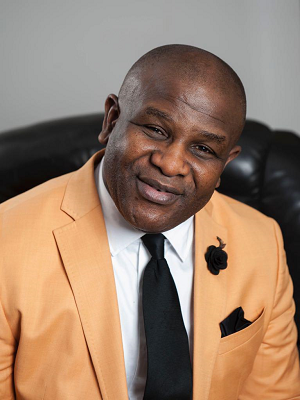By Contributor,Jessica Mendoza
Copyright forbes

Rick Rubin at the Nordic Business Forum, conference in Helsinki, Finland
Nordic Business Forum
Amidst presentations with S-curve charts and upward trending lines, a simple yet impactful insight left business leaders at the Nordic Business Forum pondering whether they truly know themselves. More than 7,000 leaders from across the world listened to speakers ranging from Simon Sinek, Jonah Berger, and Angela Ahrendts. On the last evening, Rick Rubin was the speaker grabbing the attention of leaders for the night, his insight: “Trust yourself. Follow your inner voice for your best outcomes.”
Rick Rubin is a renowned music producer, who dedicated his career to work and produce hit songs with music artists ranging from Jay Z to Adele. With multiple successful songs to his name, known for his approach to creativity which he wrote about on his book The Creative Act, he is no stranger to the entertainment industry, but business is a different space.
Business leaders expect consistent results, meeting quarterly goals, and managing teams to help their businesses and departments grow. Rick Rubin, on the other hand, pushes artists to break rules, tap into their intuition, and get very clear about their lyrics and lyric interpretation. Here are the insights Rick Rubin shared with business leaders:
Quieting The Inner Negative Voice
Rubin explains that the negative self-talk that often arises when we are about to create or make a decision is usually not rooted in truth but in fear. By quieting this voice, leaders can gain clarity and focus on what truly matters. This means recognizing when doubt or criticism is clouding their judgment and instead learning to trust the more grounded voice of intuition. Rubin frames this practice not as ignoring reality, but as tuning into the signals that point toward authentic action rather than fear-driven hesitation.
Collaboration As A Shared Learning Process
Rubin’s collaborative philosophy reflects emerging research on psychological safety and collective intelligence. Google’s Project Aristotle, which studied 180 teams over two years, shows that the most innovative teams share two key characteristics: roughly equal speaking time among members and high social sensitivity. This is exactly what Rubin describes when he emphasizes listening and creating shared learning spaces.
MORE FOR YOU
This approach challenges traditional command-and-control leadership models, but the transition requires careful implementation. While Rubin can afford to prioritize artistic exploration over immediate results, business leaders must balance collaborative ideals with operational realities. The most successful applications of his approach involve what researchers call “bounded collaboration”: creating structured environments where diverse perspectives can emerge while maintaining clear decision-making frameworks.
Rick Rubin and Diana Kander sitting in conversation at Nordic Business Forum in Helsinki, Finland
Nordic Business Forum
Meditation As A Vehicle To Gain Inner Knowing
Rubin started meditating at 14 years old, since an early age he used meditation as a tool to quiet external noise and connect with himself. Over time, it became the foundation of how he accesses creativity and intuition. He suggests that leaders too can use meditation as a practice for slowing down, detaching from constant busyness, and allowing space for clarity. For leaders who are often expected to provide fast answers, this habit creates room to access deeper insight rather than surface-level reactions. Rubin sees meditation as a daily reset that strengthens decision-making and inner confidence.
The challenge for business leaders lies in creating organizational cultures that support these practices. Research from the Center for Creative Leadership shows that leaders who regularly engage in reflective practices make more innovative decisions and demonstrate greater resilience under pressure. However, implementation requires overcoming cultural biases that equate busyness with productivity: a shift that demands both individual commitment and systemic support.
Trusting Yourself As A Leader
Rubin reminds leaders that the most innovative ideas often come from the willingness to follow instincts rather than conform to existing frameworks. In business, this may look like pursuing a strategy that feels right even when it contradicts prevailing trends, or standing firm in a vision despite external doubts. Rubin believes that true leadership comes from the ability to stay aligned with your inner compass, and that cultivating this trust creates not only stronger decisions but also inspires teams to operate with authenticity and courage.
Business leaders can use Rubin’s collaborative methods for breakthrough projects while keeping structured approaches for daily operations. Business professionals can build in time for reflection during strategic planning while still using data for immediate decisions. Ultimately, Rubin’s insights serve as a valuable counterbalance to the analytical rigor that dominates business thinking. They serve as a reminder that effective leadership begins with self-trust.
Editorial StandardsReprints & Permissions



